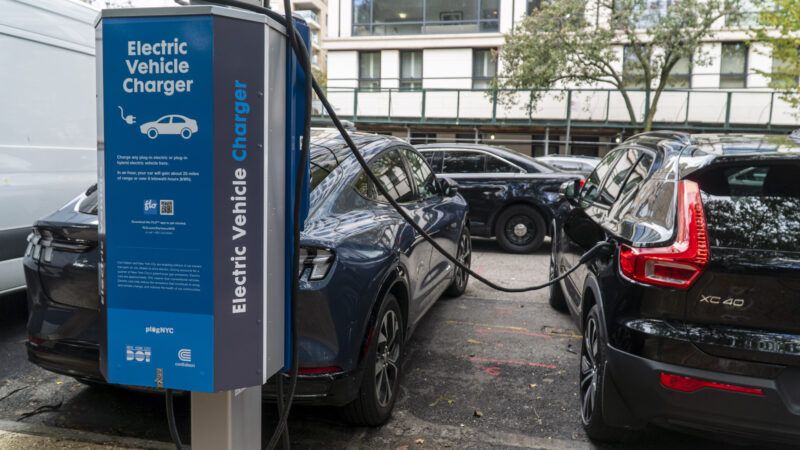Biden To Spend $7.5 Billion on Chargers That Electric Car Owners Likely Won't Use
It's unwise to try to force consumer spending habits in defiance of the market.

As part of its recently passed infrastructure bill, the Biden administration plans to spend $7.5 billion building 500,000 chargers for electric vehicles. But will drivers actually want to use those chargers?
The two biggest impediments to the widespread adoption of electric vehicles are the vehicles' range and their upfront cost. Right now there are only five varieties of electric vehicles with a range of more than 350 miles per charge, and none of them retail for a base price of less than $47,000. And while the Build Back Better Act passed by the House last month contains tax rebates for new electric vehicle purchases, none of the five qualify for the full amount. For comparison, a base model Ford Focus costs considerably less and can go further on a full tank of gas.
Conveniently placed vehicle chargers could mitigate the range issue: Ideally, a trip to a charger would simply replace a trip to the fuel pump. But the Biden plan is unlikely to fix this problem. There are two types of public vehicle chargers, Level 2 and Level 3. (Level 1 uses a standard power outlet.) Level 2 chargers produce around 25 miles of range per hour, meaning that a full charge from empty could take five hours or longer. Level 3 chargers produce considerably more power, and can charge some vehicles from empty to 80 percent in as little as 15 minutes. But while Level 2 chargers cost less than $3,000 apiece, Level 3 chargers cost as much as $140,000 each to build. There is no indication which the administration prefers, but if it plans to build 500,000 for $7.5 billion, it's almost certainly going to have to settle for Level 2 chargers.
With or without the Biden plan, electric vehicles are becoming more attractive: While they still cost more at purchase, they seem to cost less to maintain. With further competition among automakers bringing prices closer to what it would cost to buy a gas-powered car, many consumers will surely welcome the prospect of skipping trips to the pump—provided the charging technology advances as well. But if the long-term goal is to get more people to make the switch, then those cars have to function like the gas-powered cars people have now. Spending billions on chargers that take an entire afternoon to charge a vehicle is not the way to do that.

Show Comments (276)